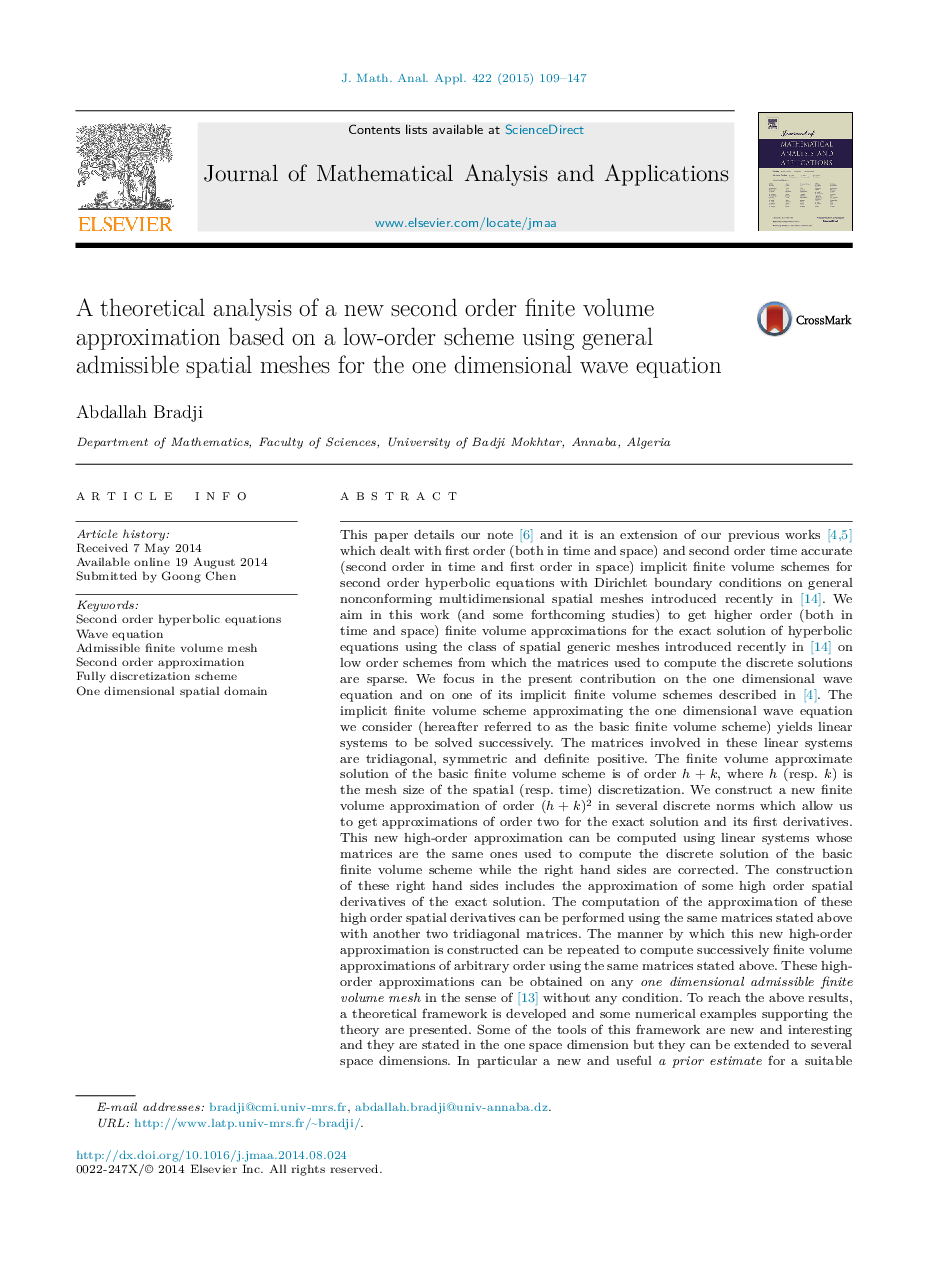| کد مقاله | کد نشریه | سال انتشار | مقاله انگلیسی | نسخه تمام متن |
|---|---|---|---|---|
| 6418074 | 1339320 | 2015 | 39 صفحه PDF | دانلود رایگان |
This paper details our note [6] and it is an extension of our previous works [4,5] which dealt with first order (both in time and space) and second order time accurate (second order in time and first order in space) implicit finite volume schemes for second order hyperbolic equations with Dirichlet boundary conditions on general nonconforming multidimensional spatial meshes introduced recently in [14]. We aim in this work (and some forthcoming studies) to get higher order (both in time and space) finite volume approximations for the exact solution of hyperbolic equations using the class of spatial generic meshes introduced recently in [14] on low order schemes from which the matrices used to compute the discrete solutions are sparse. We focus in the present contribution on the one dimensional wave equation and on one of its implicit finite volume schemes described in [4]. The implicit finite volume scheme approximating the one dimensional wave equation we consider (hereafter referred to as the basic finite volume scheme) yields linear systems to be solved successively. The matrices involved in these linear systems are tridiagonal, symmetric and definite positive. The finite volume approximate solution of the basic finite volume scheme is of order h+k, where h (resp. k) is the mesh size of the spatial (resp. time) discretization. We construct a new finite volume approximation of order (h+k)2 in several discrete norms which allow us to get approximations of order two for the exact solution and its first derivatives. This new high-order approximation can be computed using linear systems whose matrices are the same ones used to compute the discrete solution of the basic finite volume scheme while the right hand sides are corrected. The construction of these right hand sides includes the approximation of some high order spatial derivatives of the exact solution. The computation of the approximation of these high order spatial derivatives can be performed using the same matrices stated above with another two tridiagonal matrices. The manner by which this new high-order approximation is constructed can be repeated to compute successively finite volume approximations of arbitrary order using the same matrices stated above. These high-order approximations can be obtained on any one dimensional admissible finite volume mesh in the sense of [13] without any condition. To reach the above results, a theoretical framework is developed and some numerical examples supporting the theory are presented. Some of the tools of this framework are new and interesting and they are stated in the one space dimension but they can be extended to several space dimensions. In particular a new and useful a prior estimate for a suitable discrete problem is developed and proved. The proof of this a prior estimate result is based essentially on the decomposition of the solution of the discrete problem into the solutions of two suitable discrete problems. A new technique is used in order to get a convenient finite volume approximation whose discrete time derivatives of order up to order two are also converging towards the solution of the wave equation and their corresponding time derivatives.
Journal: Journal of Mathematical Analysis and Applications - Volume 422, Issue 1, 1 February 2015, Pages 109-147
